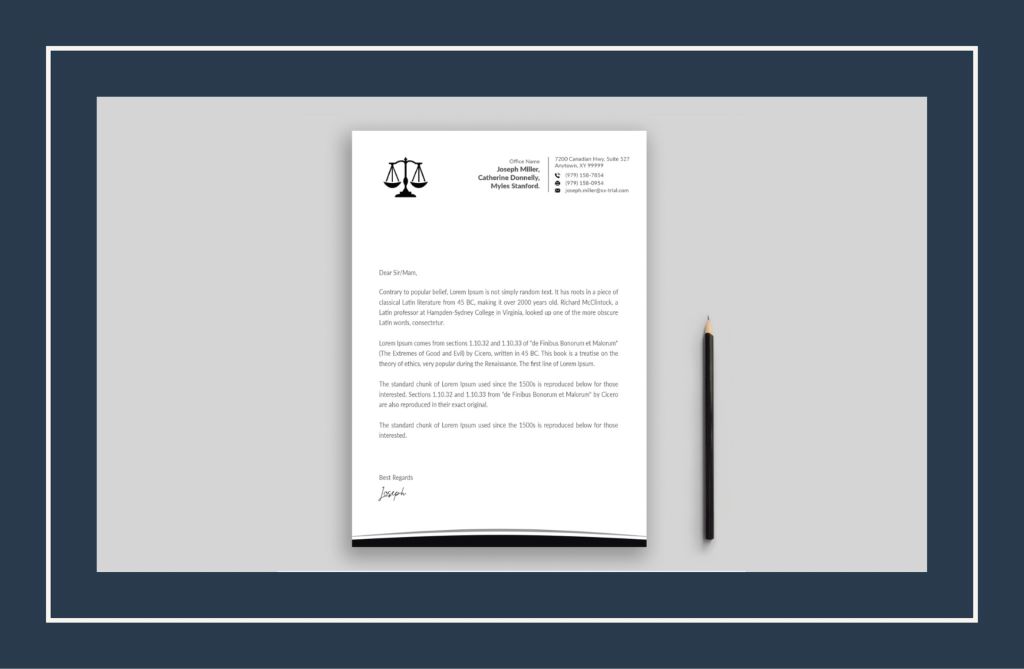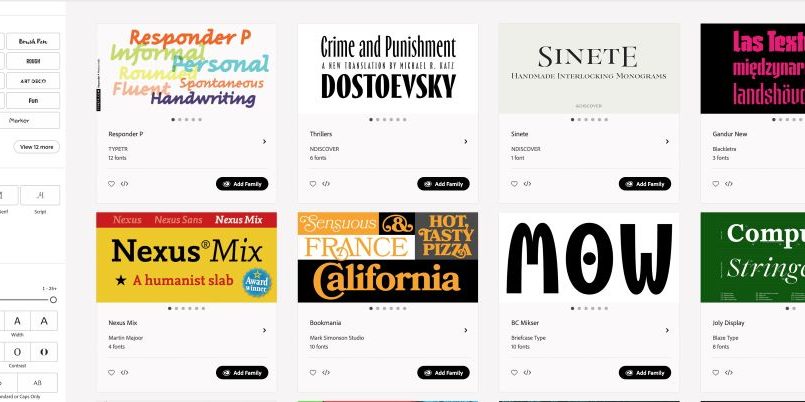When working on client projects, designers face a critical question that can have significant legal and financial implications. Choosing between Adobe Creative Cloud fonts and commercial typefaces isn’t just about aesthetics. It’s about understanding licensing agreements, usage rights, and long-term project sustainability.
Many designers turn to professional agencies like Hawaii Web Studio for guidance on navigating these complex licensing scenarios. The distinction between Creative Cloud fonts and commercial alternatives affects everything from project budgets to deliverable formats. Therefore, understanding these differences becomes essential for any design professional.
The licensing landscape has evolved dramatically over the past decade. However, confusion still persists about what designers can and cannot do with various font options. This guide breaks down the key differences between Creative Cloud font licensing and commercial font purchases. Additionally, it provides practical insights for making informed decisions on client projects.
Understanding Creative Cloud Font Licensing
Adobe Creative Cloud includes access to thousands of fonts through Adobe Fonts, formerly known as Typekit. This service allows subscribers to sync fonts directly to their desktop applications or use them in web projects. The licensing model operates on a subscription basis, meaning access continues only while the Creative Cloud subscription remains active.
Creative Cloud fonts come with specific usage rights. Subscribers can use these fonts in commercial projects, including client work, without paying additional licensing fees. The fonts can appear in logos, marketing materials, websites, and printed collateral. However, the catch lies in the subscription dependency.
When a Creative Cloud subscription ends, access to synced fonts disappears. This creates potential problems for long-term client projects. If a client receives files containing Creative Cloud fonts, they need their own subscription to edit those files properly. Otherwise, the fonts will be missing, causing layout issues and requiring font substitution.
The question of how do you handle font licensing in client projects? becomes particularly relevant with Creative Cloud fonts. Many designers face challenges when delivering final files to clients who don’t maintain Adobe subscriptions. This situation requires careful planning and clear communication about file formats and future editing capabilities.
Commercial Font Licensing Explained
Commercial fonts operate under a different model entirely. When purchasing a commercial font, designers typically buy a perpetual license for specific usage scenarios. These licenses come in various forms, including desktop licenses, web licenses, app licenses, and broadcast licenses.
Desktop licenses allow designers to install fonts on a specified number of computers. Web licenses permit embedding fonts on websites through services like web font hosting. App licenses cover font usage within mobile or desktop applications. Each license type addresses different use cases and comes with distinct pricing structures.
The advantage of commercial fonts lies in their permanence. Once purchased, the license remains valid indefinitely, assuming the terms of use are followed. Clients can receive font files along with license documentation, enabling them to make future edits without dependency on subscriptions. This approach provides greater long-term flexibility.
Commercial font foundries like Monotype, Hoefler & Co., and Font Bureau offer extensive catalogs with clear licensing terms. According to Fonts.com, understanding licensing requirements helps prevent legal complications that can arise from unauthorized font usage. Their licensing agreements specify exactly how fonts can be used across different media and platforms.
Cost Considerations and Budget Planning
Budget plays a significant role in font selection decisions. Creative Cloud subscriptions cost approximately fifty dollars monthly for individual plans, providing access to the entire Adobe Fonts library. For designers already using Creative Cloud applications, this represents excellent value since fonts are included at no additional cost.
Commercial fonts vary widely in price. A single font family might cost anywhere from thirty dollars to several hundred dollars, depending on the foundry and number of weights included. However, this one-time investment provides permanent access without ongoing subscription fees.
For agencies handling multiple client projects simultaneously, commercial font licenses often prove more economical long-term. The initial investment spreads across numerous projects, and clients receive files they can use indefinitely. Conversely, freelancers working primarily in Adobe applications might find Creative Cloud fonts sufficient for most needs.
Delivery and Client Handoff Considerations
The delivery phase reveals crucial differences between Creative Cloud and commercial fonts. When using Creative Cloud fonts, designers must convert text to outlines in vector files or flatten designs in raster formats. This prevents font-missing errors but eliminates the client’s ability to edit text later.
Alternatively, designers can recommend clients purchase their own Creative Cloud subscriptions. This solution works for clients already invested in Adobe’s ecosystem. However, smaller businesses often prefer avoiding recurring subscription costs, making this option less appealing.
Commercial fonts simplify client handoffs significantly. Designers can include font files with project deliverables, along with license documentation proving legal usage rights. Clients gain complete control over future edits without requiring specific software subscriptions. This approach proves particularly valuable for logo projects and brand identity work.
Some designers build font licensing costs into project quotes, purchasing commercial licenses on behalf of clients. This strategy ensures proper licensing while providing transparency about project expenses. Moreover, it positions the designer as knowledgeable about legal requirements and client long-term needs.

Legal Implications and Risk Management
Font licensing violations carry real legal consequences. Font foundries actively protect their intellectual property through legal action when necessary. The Typography Foundation reports that unauthorized font usage constitutes copyright infringement, potentially resulting in significant financial penalties.
Creative Cloud fonts reduce legal risk for designers because the subscription model inherently covers commercial usage rights. As long as the subscription remains active, designers operate within legal bounds. However, problems arise when subscriptions lapse or when files are shared with unlicensed users.
Commercial font licenses require careful documentation and compliance monitoring. Designers must ensure license terms match actual usage scenarios. For example, a desktop license doesn’t cover web embedding, requiring an additional web license purchase. Misunderstanding these distinctions can lead to unintentional violations.
Many design professionals maintain detailed records of font licenses purchased for specific projects. This documentation protects both designer and client in case of future audits or disputes. Additionally, it simplifies project management when team members change or when projects are revisited years later.
Making the Right Choice for Your Projects
Several factors influence the decision between Creative Cloud and commercial fonts. Project scope, client needs, budget constraints, and long-term maintenance requirements all play important roles. Understanding these variables helps designers make strategic choices.
Short-term projects with limited client involvement often work well with Creative Cloud fonts. When designers maintain full control over assets and deliver only final, flattened files, subscription-based fonts pose minimal complications. Marketing campaigns, social media graphics, and one-off designs fit this category.
Long-term branding projects benefit from commercial font investments. Logos, brand guidelines, and website designs require consistency over many years. Purchasing commercial licenses ensures fonts remain accessible regardless of subscription status changes. This approach provides stability and reduces future complications.
Client technical capabilities also matter significantly. Sophisticated clients with in-house design teams often maintain Creative Cloud subscriptions already. Therefore, using Creative Cloud fonts creates no additional burden. Meanwhile, small businesses without design resources need simpler solutions, making commercial fonts more appropriate.
Web Project Considerations
Web projects introduce unique font licensing challenges. Creative Cloud fonts can be embedded on websites through Adobe Fonts’ web hosting service. However, this requires linking the website to an active Creative Cloud account, creating another subscription dependency.
Commercial web fonts operate through various hosting services or self-hosting options. Services like Google Fonts offer free, open-source alternatives with simplified licensing. Premium commercial fonts provide distinctive typography that differentiates websites from competitors using common free fonts.
Performance considerations also influence web font decisions. Self-hosted commercial fonts give developers complete control over loading optimization and file formats. Conversely, Adobe Fonts’ content delivery network provides reliable hosting but adds external dependencies to website functionality.
Conclusion
Navigating font licensing requires understanding both Creative Cloud and commercial font models. Creative Cloud fonts offer convenience and value for designers already using Adobe applications, with commercial usage rights included in subscriptions. However, subscription dependency creates challenges for client handoffs and long-term projects.
Commercial fonts provide permanence and simplified client delivery through one-time license purchases. While initial costs exceed subscription fees, the long-term value often proves superior for branding projects and clients needing ongoing access. The optimal choice depends on project type, client capabilities, and budget considerations.
Successful designers develop strategies addressing licensing proactively rather than reactively. This includes clear client communication, proper documentation, and strategic font selection based on project requirements. By understanding these distinctions, designers protect themselves legally while delivering maximum value to clients.
Frequently Asked Questions
Can I use Adobe Creative Cloud fonts in client logos?
Yes, Creative Cloud fonts can be used in commercial logo design while your subscription remains active. However, clients may face challenges editing logo files later if they don’t have Creative Cloud subscriptions. Converting text to outlines in vector files solves this issue but prevents future text editing.
What happens to my projects if I cancel my Creative Cloud subscription?
When canceling Creative Cloud, you lose access to synced Adobe Fonts. Files using these fonts will display font-missing warnings when opened. Previously created PDFs and rasterized images remain unaffected. However, editable files require font substitution or reactivating your subscription to display correctly.
Are commercial font licenses truly perpetual?
Most commercial font licenses are perpetual, meaning they don’t expire. However, licenses typically restrict usage to specific numbers of users or computers. Upgrading to more users or different usage types may require purchasing additional licenses. Always review license agreements for specific terms.
Can I share commercial font files with clients?
This depends on the specific license agreement. Some commercial licenses permit sharing font files with clients for project-specific use. Others prohibit any distribution, requiring clients to purchase separate licenses. Always consult the license terms or contact the font foundry for clarification before sharing files.
How do I determine which fonts are free for commercial use?
Free fonts require careful license verification. Many free fonts allow personal use only, prohibiting commercial projects. Check the license file included with the font download or visit the foundry’s website for clear terms. When in doubt, contact the font creator directly or choose fonts with explicit commercial-use permissions.
Related Topics:
HOW TO GET INTO MARKETING WITHOUT A DEGREE






